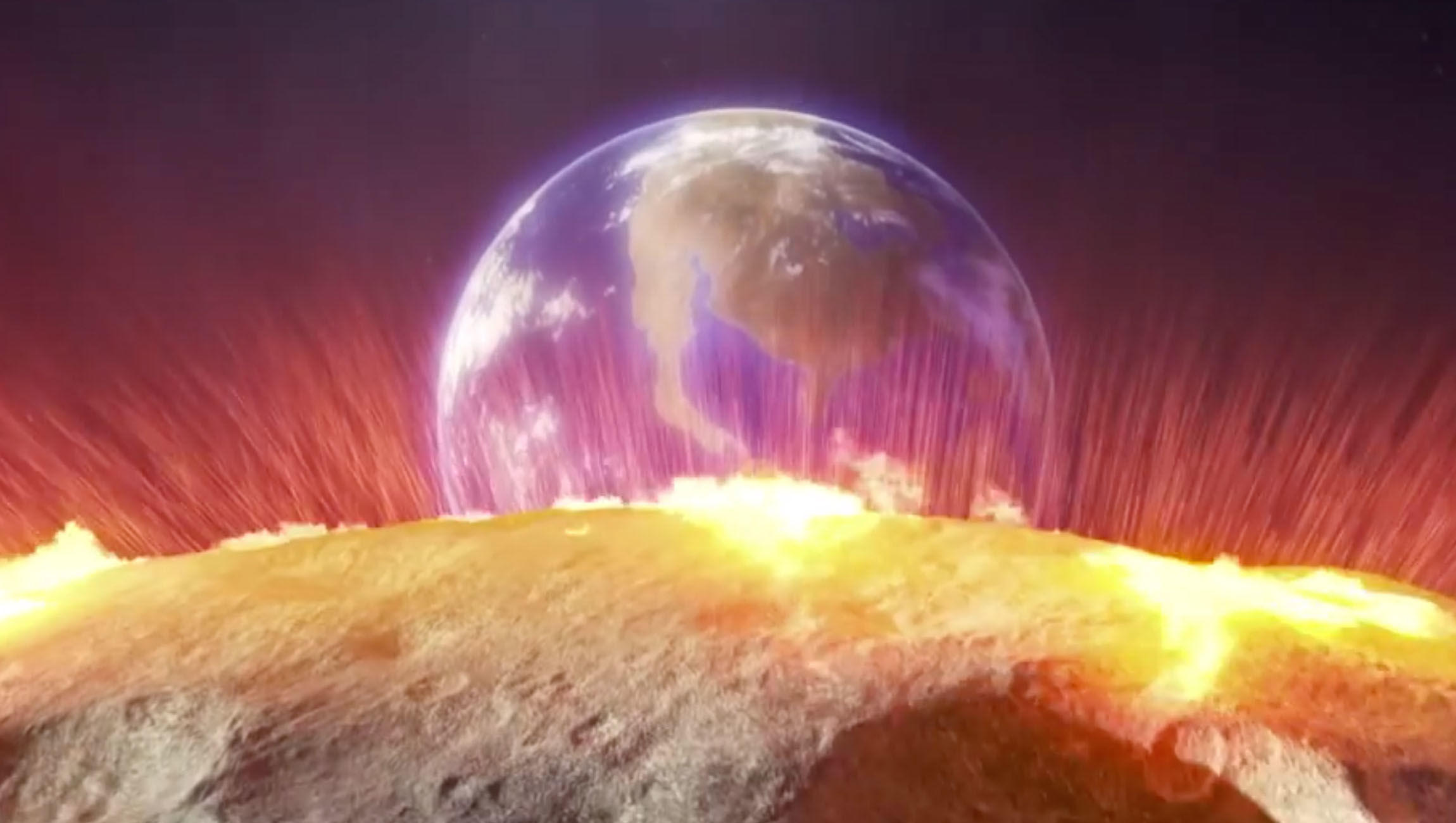Create a free profile to get unlimited access to exclusive videos, sweepstakes, and more!
This is what it was like the day after that dino-obliteraring asteroid smashed into Earth

If you have a pulse, you know that the dinosaurs, and everything else that was alive during the late Mesozoic era, faced their ultimate demise when they got asteroid-bombed 66 million years ago. But what about the day after?
Earth was more than blasted by the space rock (as imagined by the animators of The Good Dinosaur, above) that left behind the infamous Chicxulub crater. As part of the International Ocean Discovery Program, a research team from the University of Texas recently unearthed rock samples from the bottom of the ocean that showed evidence of what kind of chaos erupted just hours after the impact. The first day of what we now know as the Cenozoic Era was an apocalyptic nightmare.
The discovery “provides an unprecedented window into the immediate aftermath of the impact,” team lead Sean P.S. Gulick and colleagues said in a study recently published in Proceedings of the National Academy of Sciences.
What was it like? Rocks pelted Earth from the sky, waves from monster tsunamis crashed on the shores, wildfires tore across dry land. Gases that possibly led to the blocking of sunlight and drastic cooling of the atmosphere were released. The asteroid smashed a hole 20 miles across and 560 miles deep when it first struck in a shallow part of the sea. That triggered massive waves, pushed rock into forming hills, and sent even more rocks flying so high they could have reached the moon.
That was only the beginning of the chaos. Any rock littering the air rained back down in minutes and scarred the planet. Smaller particles of rock would melt as they shot downward and form tektites—the glassy blobs molten rock turns into when it cools. As if things couldn’t get any worse, just 30 minutes after the impact, seawater began to gush back into the crater, bringing debris with it. After a few hours, the tsunami waves that were huge enough to reach distant shores receded and dumped all the land debris they carried with them into the ocean.
Studying the cylindrical samples of rock recovered from the waters of the Yucatán peninsula was like peering millions of years back in time. The scientists went through 430 feet of sedimentary rock using powerful hi-res photography, microscopy, magnetic measurements, and CT scans to put together this cinematic picture of the day after.
“The high-resolution section provides insight into the impact environmental effects,” they said, and those include “charcoal as evidence for impact-induced wildfires” and “sulfur-rich evaporates … supporting rapid global cooling and darkness as extinction mechanisms.”
This could have made the most thrilling documentary ever if someone had been there to film it in real time. Unfortunately, even if dinosaurs had camera equipment, it would never have survived.
(via The New York Times)


























